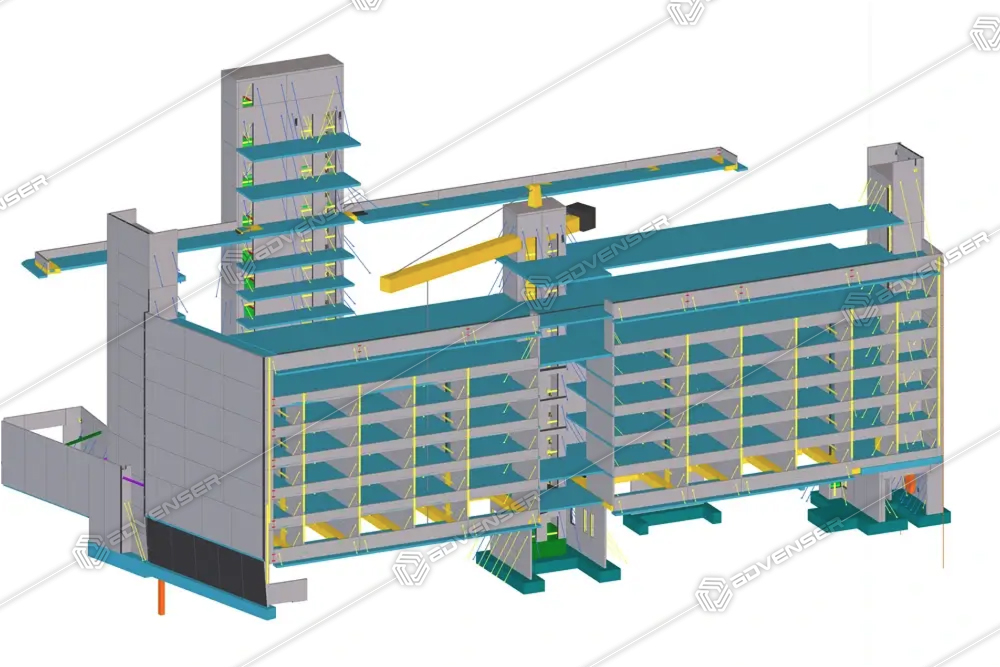Over the years, BIM has simplified complex workflows, enabling seamless collaboration between architects, engineers, contractors, and project owners. As technology continues to evolve, the role of BIM in the AEC industry is expanding, with new trends having emerged that promises to further enhance its potential.
The Top BIM Trends of 2024
The evolution of BIM is relentless, having introduced innovative tools and methodologies that redefine how the AEC industry operates. Here are some of the top trends that shaped BIM in 2024:1. 3D Printing Integration with BIM
3D printing has revolutionized manufacturing, and its integration with BIM is taking construction to new heights. By transforming digital models into tangible prototypes, 3D printing enables teams to visualize building elements in physical form. This helps stakeholders assess the functionality, aesthetics, and structural integrity of designs before actual construction begins.Using thin layers of material, 3D printers can produce intricate components with minimal waste, making the process eco-friendly. When combined with BIM workflows, 3D printing allows for rapid prototyping and effective communication among team members, leading to streamlined project execution.
2. Augmented and Virtual Reality (AR/VR)
AR and VR are becoming indispensable tools in the BIM toolkit, enhancing visualization and collaboration. These technologies provide immersive experiences, enabling stakeholders to explore large-scale 3D models in real time. With AR/VR, a top BIM company can conduct virtual walkthroughs, identify design flaws, and present interactive models to clients, fostering better decision-making.AR also supports on-site tasks like clash detection and remote management, helping project teams resolve issues swiftly. As AR/VR technology advances, its application within BIM processes will become even more prevalent, bridging the gap between design and construction.
3. Cloud-Based BIM Solutions
Cloud computing is transforming how BIM data is stored, shared, and accessed. Cloud-based BIM platforms empower teams to collaborate seamlessly by providing real-time access to design data from any location. These solutions enhance communication, reduce miscommunication, and ensure all stakeholders are aligned throughout the project lifecycle.Mobile applications further enhance this collaboration by enabling instant updates, reporting, and data sharing, thus minimizing delays and boosting efficiency. The adoption of cloud frameworks ensures projects are completed on time and within budget.
4. Internet of Things (IoT) Integration
The Internet of Things (IoT) is redefining how BIM interacts with real-world data. IoT devices can collect real-time information from construction sites, feeding it back into BIM models for analysis and optimization. This integration enables prefabrication workflows, predictive maintenance, and smarter design decisions.For instance, IoT sensors can monitor energy usage, structural integrity, and environmental conditions, allowing BIM models to adapt dynamically. This data-driven approach ensures that construction projects are not only efficient but also sustainable.
5. Drones for Data Collection
Drones are becoming an essential tool in the AEC industry, particularly for data collection and site monitoring. Equipped with high-resolution cameras and sensors, drones can survey large areas quickly and safely, capturing precise data for BIM modeling. This information is invaluable for refining designs and ensuring projects stay on track.Additionally, drones reduce risks associated with manual surveying, especially in hazardous environments. Their ability to provide aerial views and real-time progress updates makes them a game-changer for construction management.
6. Improved Sustainability
Sustainability in construction involves addressing energy efficiency, green architecture, and eco-friendly processes. BIM plays a pivotal role in evaluating project models for environmental impact, considering factors such as CO2 emissions, energy consumption, and compatibility with renewable energy systems like solar panels or wind turbines.Energy modeling within BIM enables comprehensive analysis of future building operations, ensuring they align with sustainability goals. As environmental concerns grow, many governments have mandated the use of “green” construction practices. BIM not only simplifies this transition but also ensures compliance with regulations, making sustainability an integral part of the construction lifecycle.




